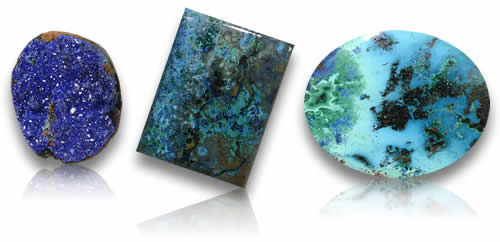
Actinolite is a rare translucent variety of chatoyant actinolite. It is an amphibole silicate that is sometimes mistakenly called "cat's eye jade".

Amber, the fossilized, hardened resin of the pine tree, is one of the few gemstones of organic origin. Most amber is found in the Baltic, where it formed about 50 million years ago.

Amethyst is the most precious gemstone within the quartz group. Amethyst ranges in color from pale lilac to deep reddish-purple.

Ametrine is a form of quartz that occurs in bands of yellow and purple, a combination of the colors of amethyst and citrine.

Aquamarine is best known for its breathtaking range of blue colors and belongs to the same family as emerald (beryl). Aquamarine is colored by trace amounts of iron.

Azurite is an intense blue gem that gets its bright azure blue color from copper, and is related to malachite, which is also a copper carbonate mineral.

Black Opal is the most valuable opal variety. Its dark body color can range from dark to black and acts as the base for the spectrum of colors it can exhibit.

Charoite is a new gem on the market, first appearing in 1978. It is found only in one location in Siberia, Russia. The swirling shapes of lavender and violet are quite unique.

Carnelian is a brownish red to orange variety of chalcedony quartz, colored by trace amounts of iron. Darker colors (red-brown to brown) are often referred to by the name sard.
